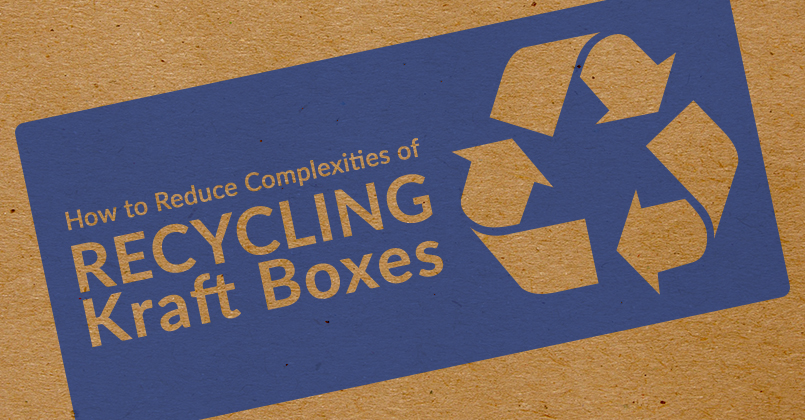
Point to ponder: how various items are recycled and why some items are more difficult to recycle as compared to others? Kraft is a material that is generally known for its high tensile strength. It is a type of paper that is produced using a “Kraft” process. Due to its high elasticity and tear resistance qualities Kraft is a preferred packaging material. Sometimes corrugated cardboard boxes are made from the multiple layers of Kraft paper.
Knowing that there are so many applications of Kraft when it comes to packaging. It is not shocking to find large volumes going in the waste. Many operations (such as manufacturing companies, distribution center, etc.) consume large amounts of Kraft and divert it from the waste stream to recycling. Hence reducing waste to landfill and increasing the recycling rates.
Recycling for different objects tends to vary but Kraft is usually recycled in a similar manner to ordinary paper. There are three main steps in which Kraft boxes are recycled: Sorting & Collection, Bailing and Shipping & Milling.
The first phase of recycling Kraft box is to understand, what the box was initially used for. For example some boxes that come for recycling have additional poly-liner, a wax coating or glaze. Such additions are made to the box to increase its wet strength or to make it more oil resistance. Some recycling service providers are choosy about accepting lined Kraft boxes with respect to unlined Kraft Boxes. Similarly Kraft Boxes can be recycled with corrugated cardboard boxes whereas in some cases these materials must be separate from each other. If you are planning to give Kraft boxes for reprocessing, you should contact your recycling service provider beforehand.
Once collected and sorted, certain companies choose to bale their Kraft boxes for more cost effective shipment.
Once the Kraft boxes make their way to the mill they will be pulped and used as feed stock for new paper products. There are several stages to the recycling process of Kraft boxes. Generally the recycling process ends with the boxes being re-manufactured into something new.
Usually all recyclable materials have some difficulty in recycling. There are two main areas where Kraft boxes face difficulties when getting recycled: contamination and market rates.
When it comes to contamination in any material is usually refers to the fact that there is an undesirable material or substance present beside the chosen material. For example when you are recycling Kraft boxes, the contaminants in this case would be dirt, grease, food waste, tissues, scraps of metal, etc.
There are two types of contaminations classified in the recycling Kraft box industry: out throws and prohibitive materials. Out throws are those contaminants that can be picked out physically during the processing. Whereas, prohibitive materials are those contaminants that cannot be picked out physically, such contaminants require a chemical processing to be eliminated. This chemical process can affect the quality and value of the end material.
If markets were not willing to purchase Kraft boxes after their recycling, they will become a burden on the recycling companies. In the current era the rates of untainted Kraft boxes are equivalent to those of recycled. It is due to this fact that recycling companies have strict rules against contamination. Kraft boxes that have high levels of contamination are often considered riskier to work with.
Current market for Kraft Packaging is growing rapidly and there is still room for improvement. The improved Kraft packaging material increases the sale volume therefore elevating the probabilities of higher profit margins. For all those part of the chain who reside themselves in selling recyclable Kraft packaging material; should keep in mind that there are some recycling factories that do not take Kraft materials with high contamination levels. For example, Kraft material used in packaging cement bags, food, beverages and pharmaceutical companies. Such packaging materials contains high levels of contamination therefore either it will not be considered suitable to recycle or would make the recycling process extremely difficult.